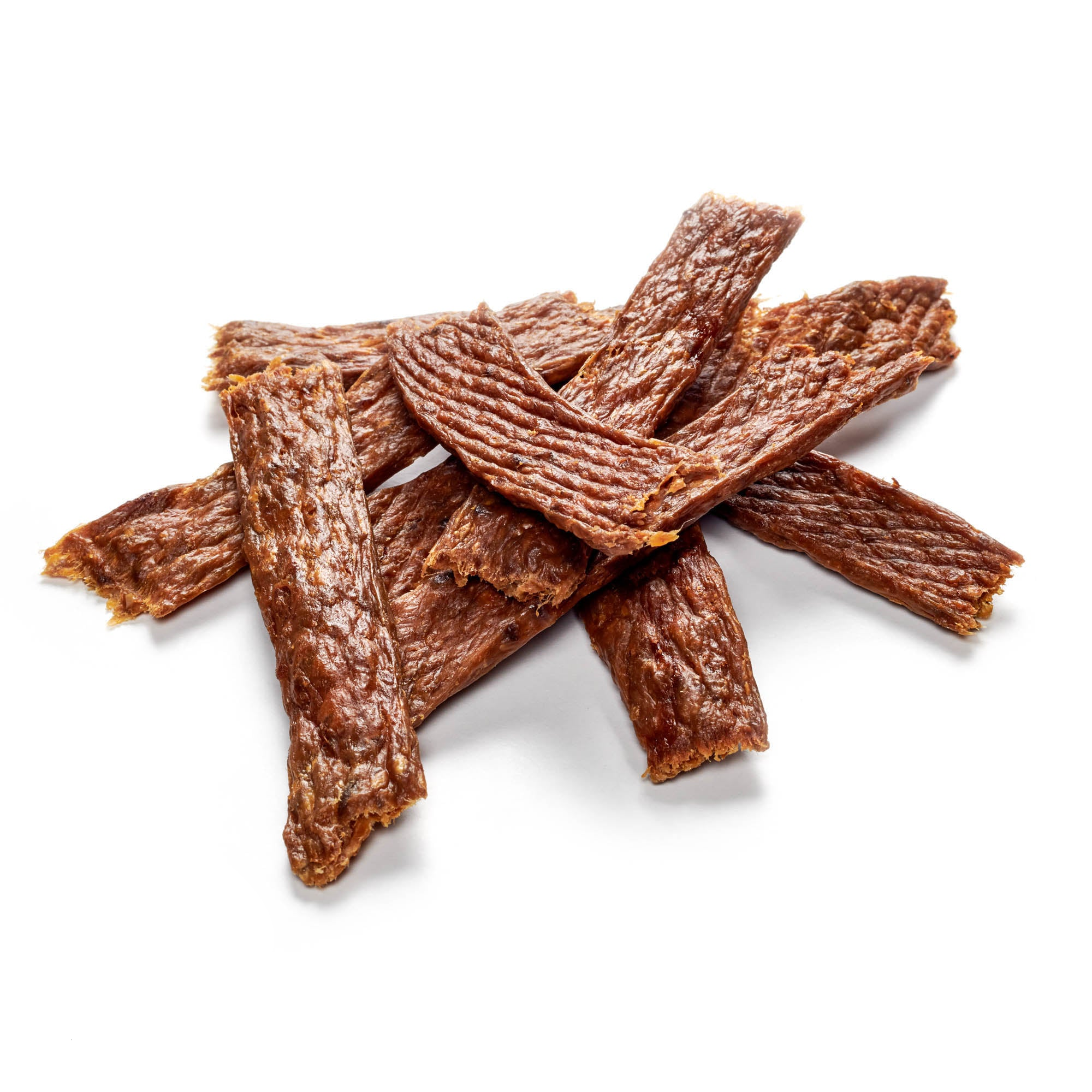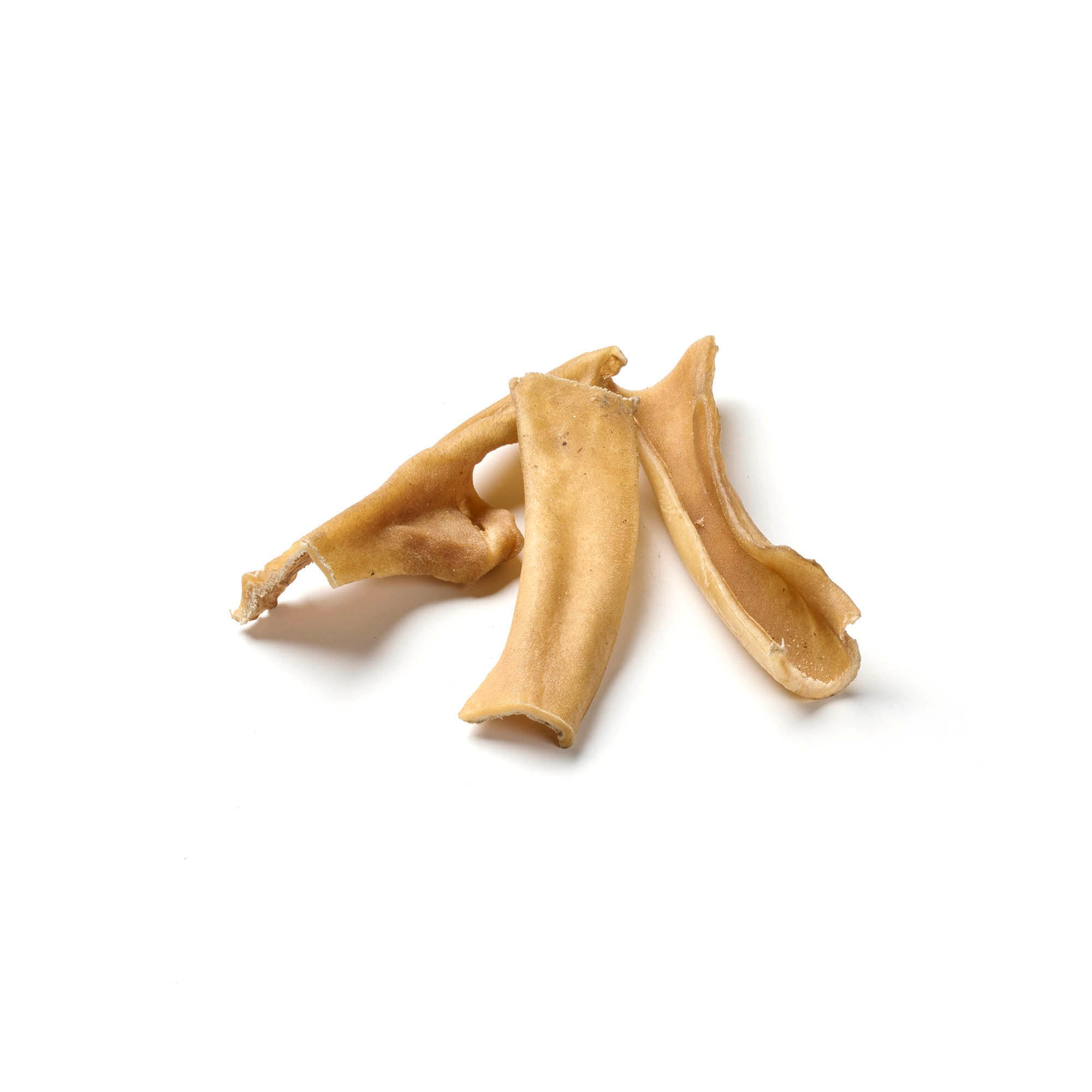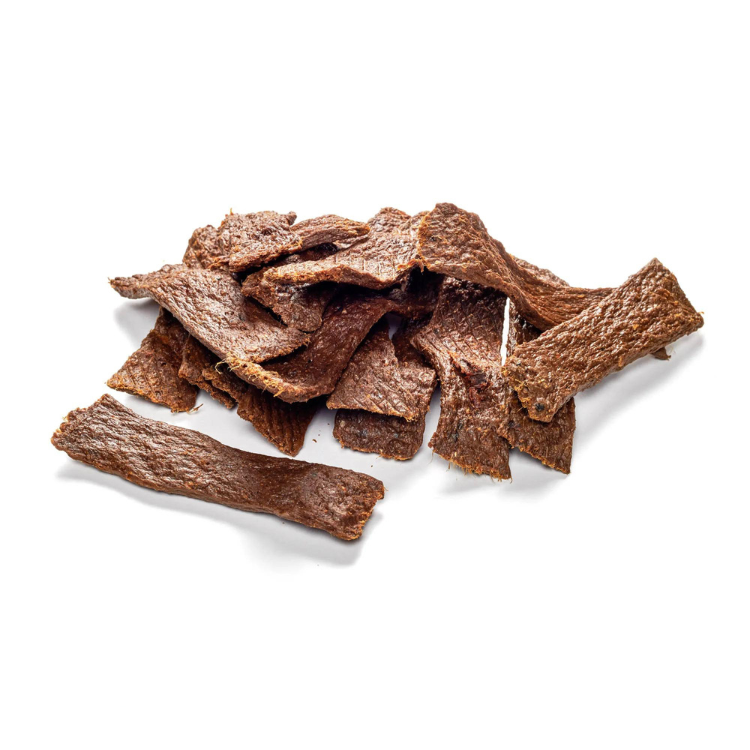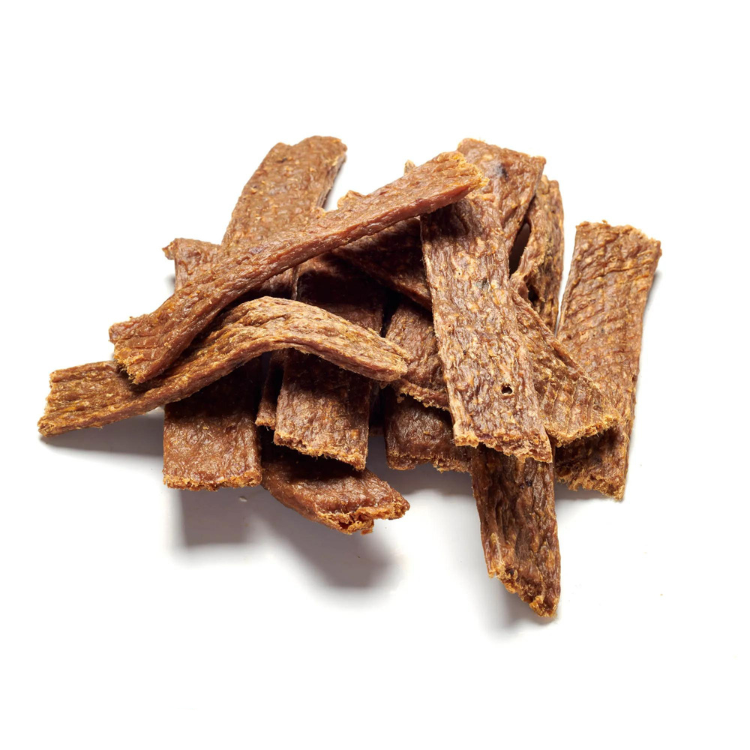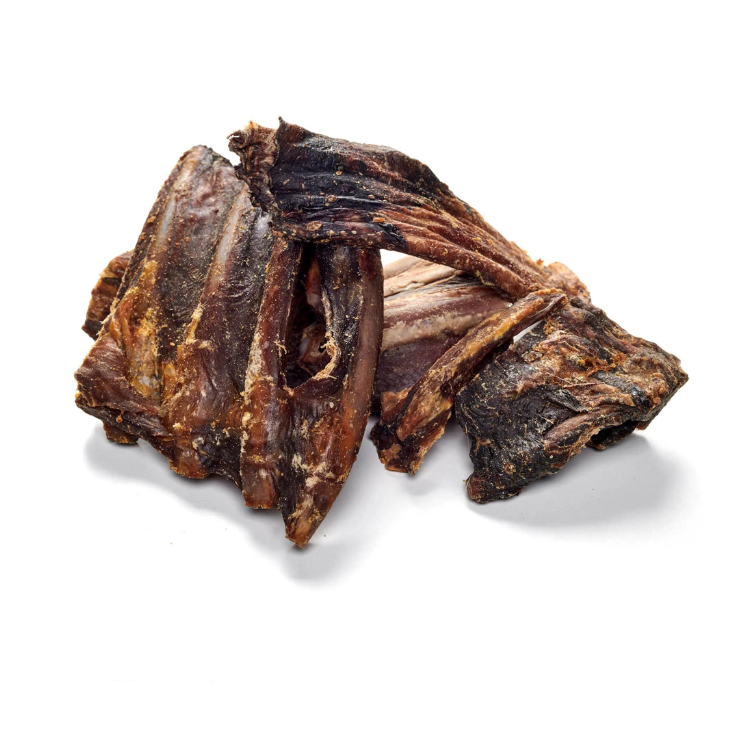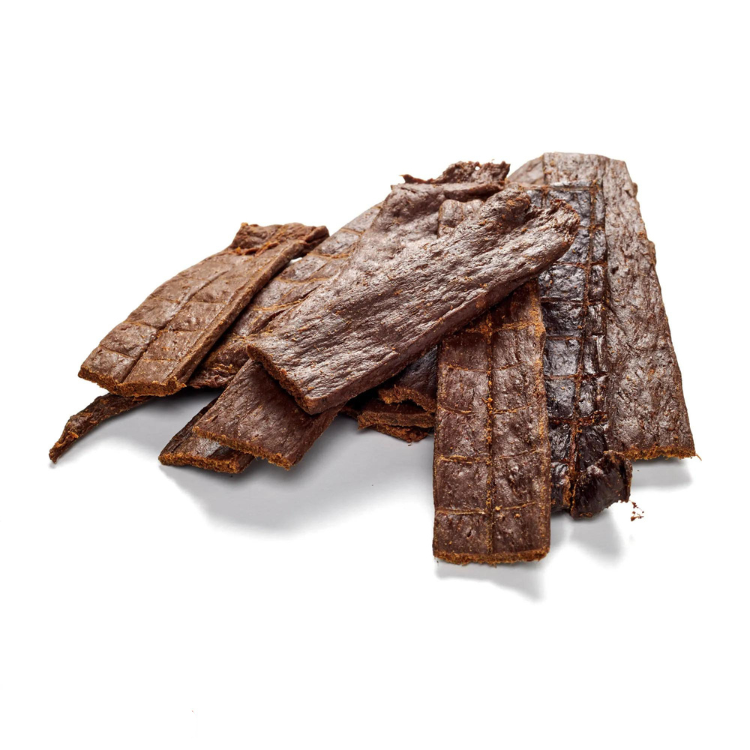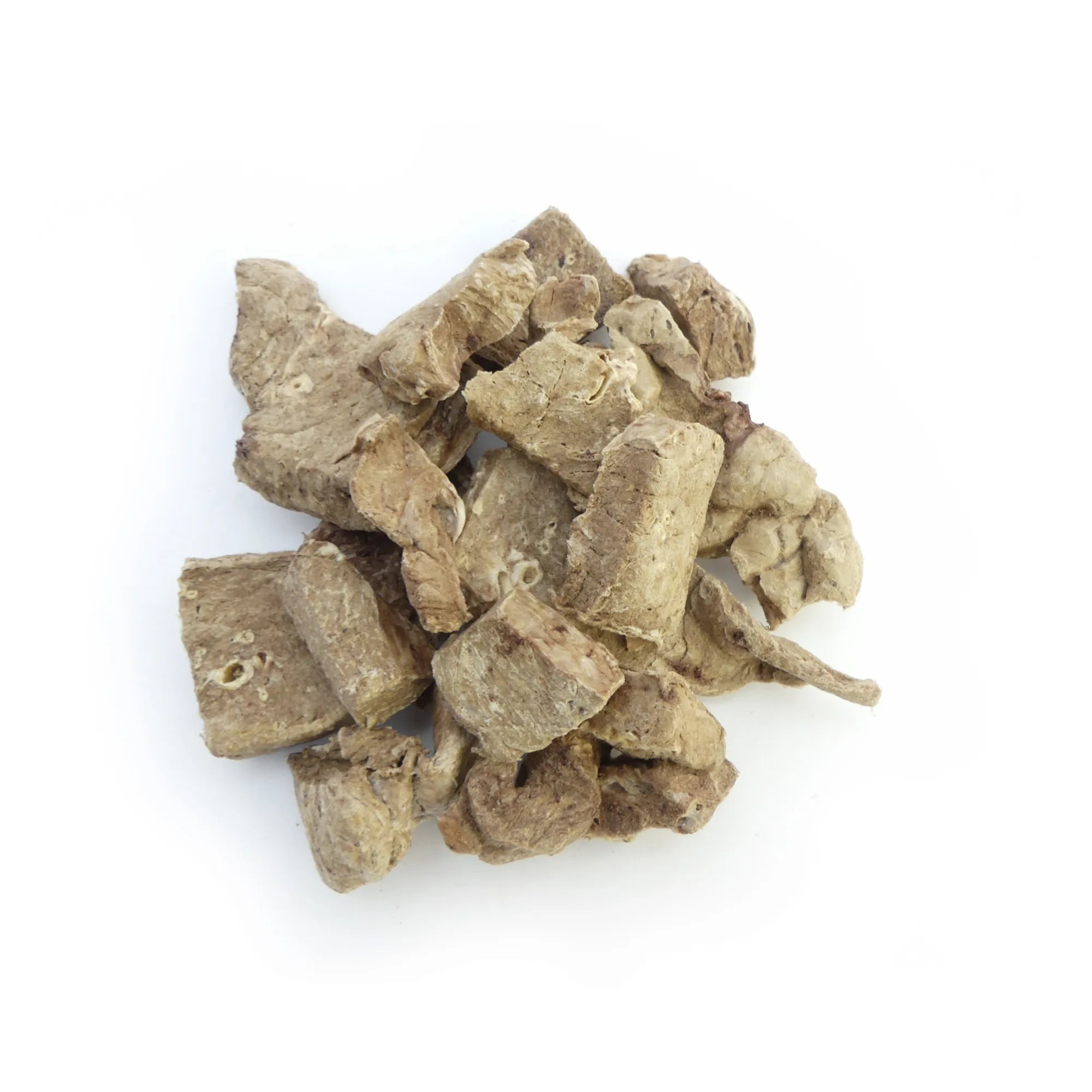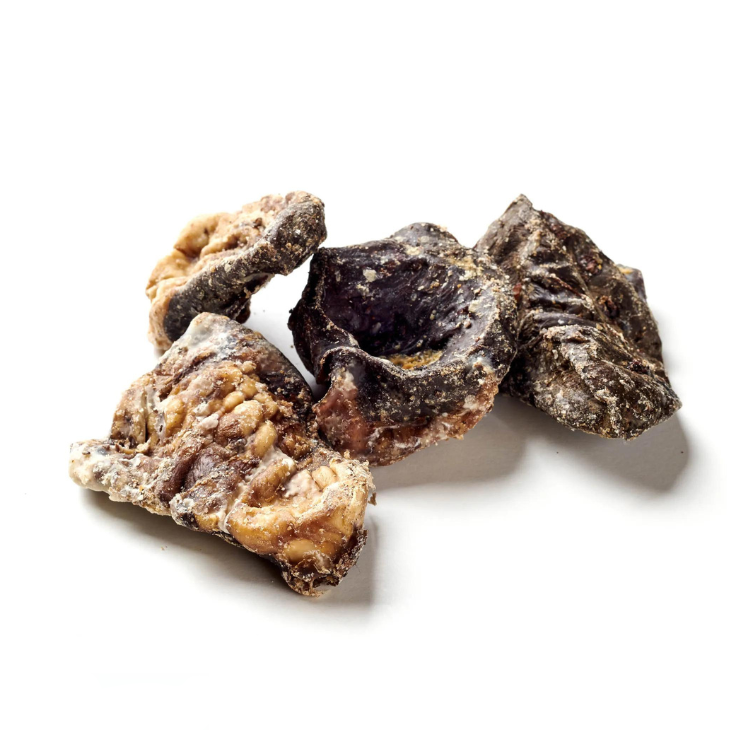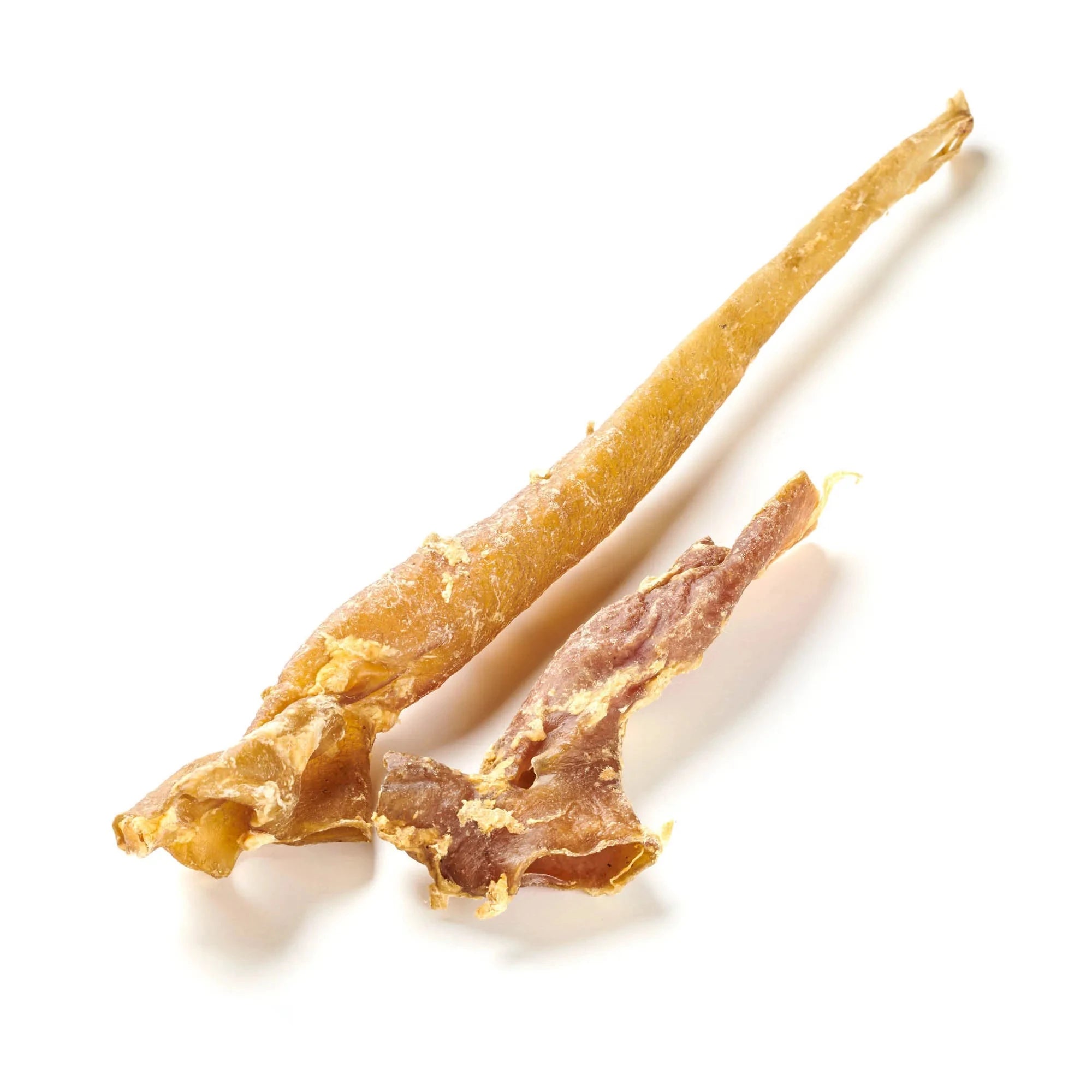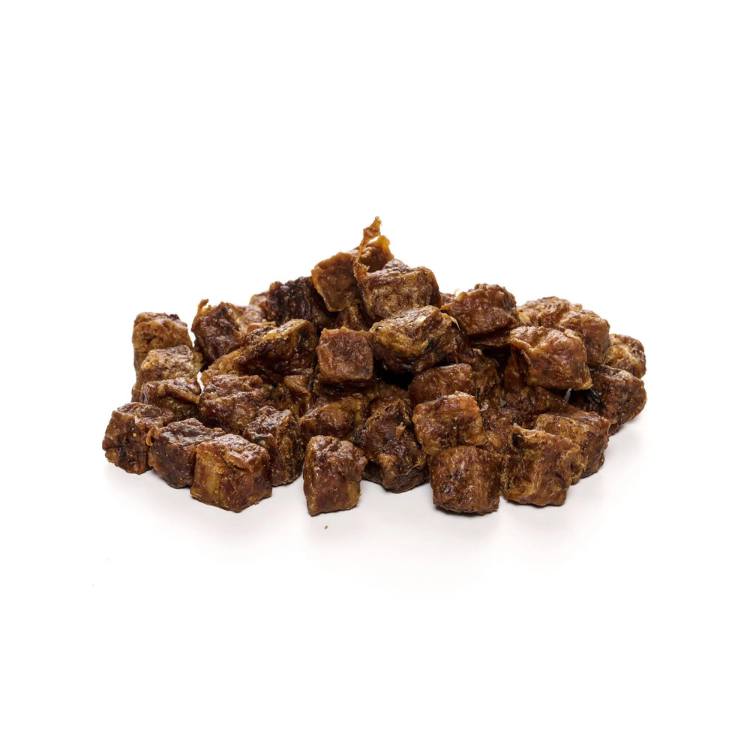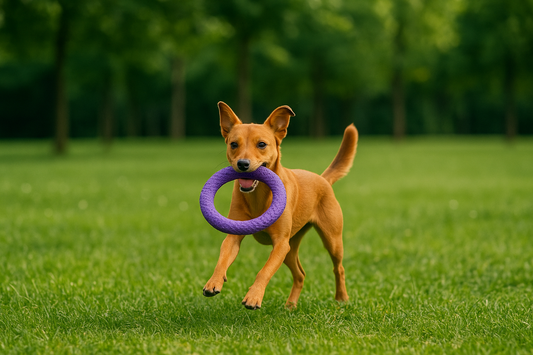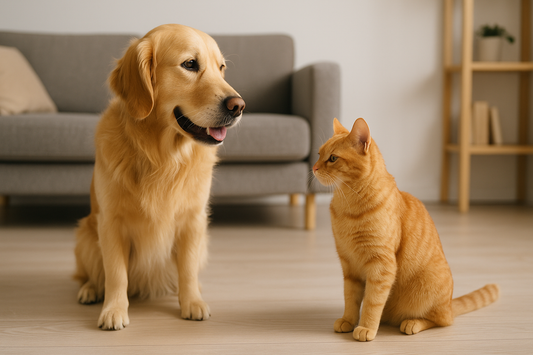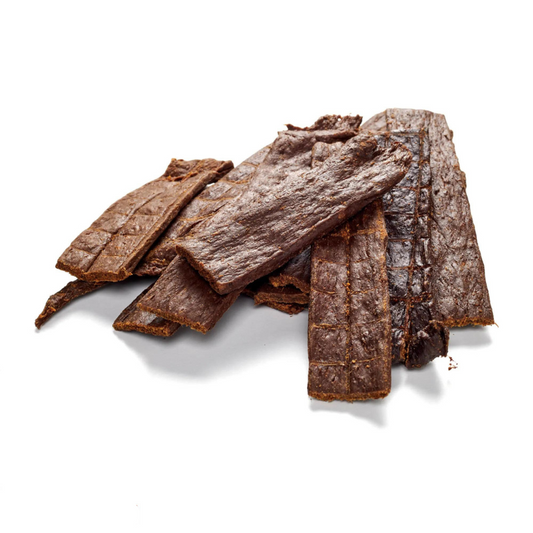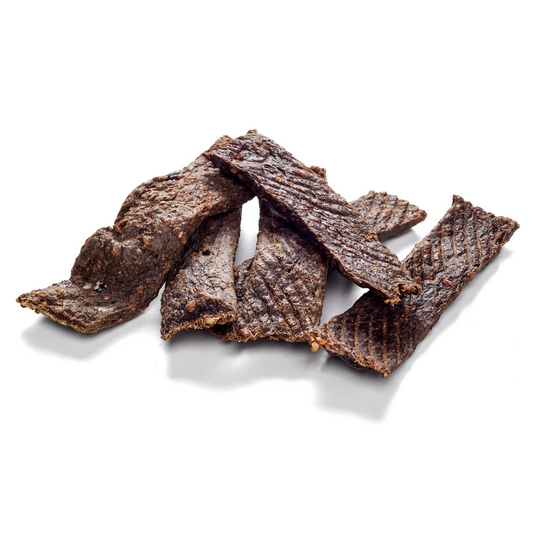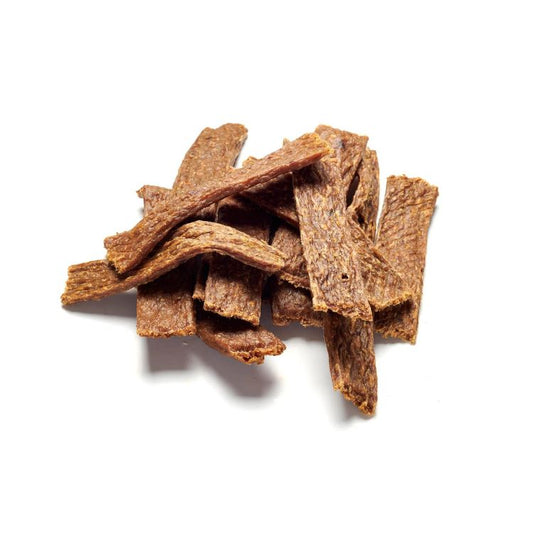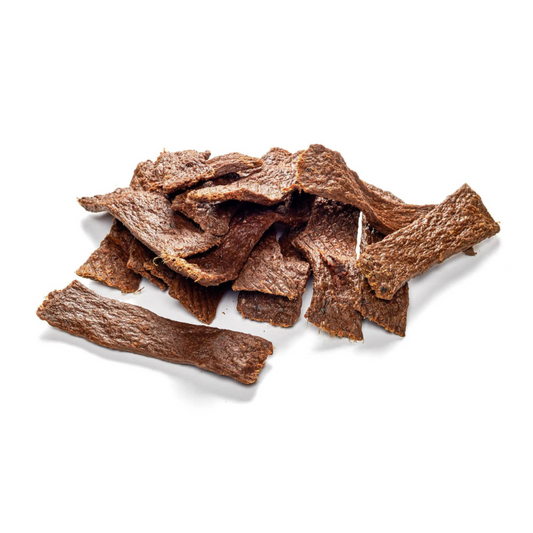
Which dog is best suited to me?
Share
If you want to bring a four-legged companion into your life, you can choose a cat, but if you are looking for a loyal companion, you need a dog. With around 340 dog breeds and many more mixed breeds, the choice is not easy. The decision requires consideration and a deep understanding of what makes each dog breed unique and what needs, behaviors and requirements they bring with them. Because these should fit your lifestyle so that not only you are happy, but also your furry friend.
Content: Which dog is best suited to me?
- Which dog is best suited to me?
- The character of the dog
- The appearance of your dog
- Caring for the dog
- Your experience
- What dog breed categories are there?
- Animal shelter or breeding
- Conclusion
Pamper your dog with our chew products!
Dogs are just as different as we humans are. They are different sizes, look completely different and sometimes have their own habits. Which dog suits you best depends on your personality traits.
Which dog is best suited to me?
When you imagine playing with your dog and spending time together, getting a dog seems tempting. But before making this important decision, you have to ask yourself the question: Which dog is best for me?
When choosing the right dog, there are many factors to consider to ensure that you and your future companion will be happy together. Think about your living situation: How much space do you have? How much time can you devote to caring for and walking your dog each day? Also consider your activity levels - some dogs need more exercise and mental stimulation than others.
It is also important to think about any allergies in the family or house policies regarding pets. Also, find out about the different breeds and their specific needs in terms of dog care , health, dog nutrition and temperament. For example, there are dog breeds that are more suitable for allergy sufferers than others.
A well-considered decision that takes these aspects into account will help you find a dog that not only fits your lifestyle but can also live a happy and healthy life with you.
The character of the dog
Choosing the right breed of dog is crucial. In order for you and your dog to have a harmonious and enriching relationship, his personality and nature should fit well with your own lifestyle.
If you are a naturally calm person who enjoys relaxing days, a dog with a calm and even-tempered temperament would be ideal. For example, a Basset Hound or a Shih Tzu might be a good fit for you if you have a relaxed lifestyle and are looking for a quiet, frugal companion.
On the other hand, if you lead an active life and regularly go jogging or on long hikes, you may want to consider a more active dog. Dogs that are naturally energetic and playful, such as a Border Collie or an Australian Shepherd, may be a good fit for you.
Of course, the size of the dog also plays an important role, as it should fit in with your living conditions. A large Great Dane is difficult to keep in a small city apartment. Conversely, this is less of a problem, as a small terrier is less bothered by having a whole yard at his disposal.
So there are a few things to consider before you make a decision. If you choose a dog that suits you in terms of personality and activity, you can build a strong relationship. Your dog will be more than just a pet - he will be a real companion for life.
The appearance of your dog
The appearance of your dog is not the most important thing, but it can of course play a role. When you are thinking about which dog you want to get, it is perfectly normal to pay attention to its appearance.
Think about what is important to you visually in a dog. Do you have a favorite coat color? Do you prefer short or long fur? The size of the dog can also be an important factor: Are you attracted to large, powerful dogs or does a smaller, more compact dog suit your lifestyle better?
Details such as the shape of the ears or the length of the legs can also influence your decision. It makes sense to take all of these characteristics into account in order to find a dog that not only appeals to you in terms of character, but also in terms of appearance.
A dog that you like on the outside can increase the joy you have spending time together and strengthen the bond between you. Even if appearance isn't everything, it can have a positive effect on your well-being and satisfaction with your future companion.
Caring for the dog
Taking care of your dog is very important, no matter what breed, size or gender he is. Every dog needs care and attention to stay happy and healthy.
Before you take a dog into your home, you need to consider whether you can provide the care it needs. Do you have enough time to give it enough exercise and mental stimulation? Physical activity and games are important for its health.
Also check if your home is big enough and if you have enough time for him despite your daily responsibilities. A dog needs not only food and water, but also your love and regular care such as grooming, teeth cleaning and vet visits.
Make sure you are willing to take on this responsibility so that your dog can live a happy and healthy life.
Discover the range of dog snacks in our store!
Your experience
Your previous experience in keeping dogs should not be underestimated. If you have already had a dog, you have a certain amount of experience in keeping and training a four-legged friend and this can be particularly helpful if you decide on a more demanding breed, such as a Siberian Husky or a Border Collie, which need to be challenged not only physically but also mentally.
For first-time owners, however, it may be a good idea to start with a breed of dog that is considered “beginner-friendly,” such as a Labrador Retriever or a Cavalier King Charles Spaniel. These breeds are often more patient and easier to handle, making it easier to get started with dog ownership.
What dog breed categories are there?
Driving and herding dogs
- The dog breeds in this category were and are bred to guard and drive herds of animals. Although these dogs have a hunting instinct, this is suppressed through breeding and appropriate training. The independent and watchful animals show pronounced territorial behavior. Their enormous need for exercise is coupled with incredible stamina and a corresponding need for exercise - so they are not for lazy dog owners. They are generally good watchdogs, but need strict and experienced training. These include:
- Australian Shepherd
- Border Collie
- German shepherd dog
- Icelandic dog
Pinschers and Schnauzers
The Pinscher and Schnauzer group includes a diverse range of dog breeds that, despite their differences, share common roots. These dogs are among the oldest dog breeds and were originally bred for a variety of tasks.
Many of them are known for their robustness, intelligence and energy, making them excellent candidates for specialized tasks such as therapy work, hunting or rescue missions.
However, there are also breeds within this group, such as the Affenpinscher, that are smaller and less geared towards physically demanding tasks. These smaller representatives are often well suited to beginner owners and adapt easily to life in an apartment or quiet home environment.
Overall, Pinschers and Schnauzers are valued for their adaptability and ability to excel in a variety of roles. Whether as a working dog or as a loyal everyday companion, they offer something for almost every dog lover. These include:
terrier
The small terriers are always underestimated. They may be small and usually look cute, but they are actually small hunting dogs that specialize in nimble animals and have a very high need for exercise! The name comes from Terra, which is Latin and means earth. Terriers are actually dogs for so-called earth work. They are used to hunt martens, foxes or rabbits, which they can easily follow in their underground burrows. They were also used against rats.
However, there are major differences within this group. 34 terrier breeds share one of the FCI's ten groups and so there are some differences. For example, a distinction is made between "high-legged", "low-legged", "bull-type" and "dwarf terriers".
Terriers include:
Dachshunds
Dachshunds are also considered to be earth dogs . Dachshunds and teckels are called dachshunds. The small dogs with the characteristic short legs are extremely popular hunting dogs that can penetrate the burrows of foxes, martens or badgers even better than any terrier. In contrast to many other hunting dogs , dachshunds can also be kept as excellent family dogs if they are properly trained. Nevertheless, they are sometimes considered to be stubborn dogs that know what they want and usually get it. These include:
- dachshund
- Dachshund
Spitz and primitive dogs
The most prominent representative of this group is certainly the Husky, but this group is also very diverse. The different dog breeds differ greatly in both appearance and character. This is not surprising, as they are usually not genetically related and were sometimes bred for completely different tasks. On the whole, however, the dogs in this FCI Group 5 can be described as hunting, herding, guard and sled dogs. Some of them can also be described as companion dogs.
Because of their versatility and specialized skills, they are ideal for active people who are willing to invest a lot of time in training and keeping their four-legged friends busy.
They are particularly well suited to owners who appreciate outdoor activities and can provide the physical and mental stimulation that these breeds require.
However, for people who prefer a quieter lifestyle or have less time to spend intensively with their dog, these high-energy and hard-working breeds are not an option! This group includes:
Hounds, scent hounds and related breeds
This group of dog breeds also consists of hunting dogs. They combine the ability of a particularly good sense of smell with enormous stamina, which is why they are used in hunting. The term "sweat" is used by hunters to describe the blood of wounded prey. In this context, "sweat" has nothing to do with sweating.
Bloodhounds are named after them because they are exceptionally good at tracking down bloodstains left by wounded game. Their job is to track the wounded game and make the hunter's search easier.
This can be a problem for dog owners who don't go hunting, because even with persistent training and good dog education, this hunting instinct is difficult to break. They are also not suitable as guard dogs, because they don't show any particular territorial behavior - after all, they are used to being able to call an entire hunting area their own.
This genus includes, among others:
- beagle
- Dalmatian
- Bloodhound
- Rhodesian Ridgeback
- English Foxhound
Spoil your four-legged friend with our delicate chew items!
Pointing dogs
Pointing dogs are also hunting experts. The crucial difference to hounds or tracking dogs is their hunting behavior. They search for game in the same way, but do not chase it or attack it themselves. Their special ability is to "only" indicate the game, leaving the hunter to decide what happens to the wild animal. A crucial difference. However, pointing dogs, hounds and tracking dogs have one thing in common: a persistent need for movement.
Although they are usually very loving family dogs, they are difficult to control on a leash outside. A pointer dog can only walk well on a leash with patient training. Even if they can do without it for a long time, these dogs need a challenge in the form of search tasks from time to time. Pointer dogs include:
Retrievers - Flushing dogs - Water dogs
Retrievers are often very popular family dogs because they are willing to submit and want to please. Whether they are retrievers, water dogs or flushing dogs - like most dog breeds, they were bred for hunting. In this case, retrieving birds is their specialty. They track down the animals they have hit and bring them back to the hunter - this is known as retrieving. This is why these dogs also bring balls or Frisbees back to their owners with great pleasure.
For this purpose, they are also specialized in water and absolutely love to swim. They are sociable and friendly creatures that integrate well into family life. Nevertheless, their need for movement and hunting instinct should not be underestimated. As long as they are allowed to live out their talents in sports and games, they are easy to keep and are therefore extremely popular with families.
Companion and service dogs
The only FCI group that was not bred for hunting is group 9. The term companion dogs speaks for itself in this case, because that is exactly what they were bred for. They are meant to be companions and loyal partners to humans.
They are usually small dog breeds that were bred more for their appearance than for their physical attributes. This does not mean that these dog breeds should be underestimated.
They also need challenges and careful training, but they quickly become submissive and are very attached to their owners. For many, this group of dog breeds is a good starting point. These include:
Greyhounds
Why greyhounds deserve their name becomes clear when you see these fast dogs running. The greyhound is the second fastest land animal on earth, reaching speeds of up to 70 km/h (!) - after the cheetah. So it's no wonder that they were bred and optimized over many years for hunting particularly fast game such as gazelles or hares. Unlike other hunting dogs, greyhounds use their eyes rather than their noses. They hunt by sight and mercilessly exploit their speed advantage!
Nowadays they are kept more as family or companion dogs and in English-speaking countries they are also often used in dog racing. Greyhounds are particularly sociable and friendly animals that are sensitive and calm. But when they are allowed to run free, they show what speed they can do. These include:
Animal shelter or breeding
In addition to animal breeding, there are plenty of animal shelters that are full of dogs looking for a new home, especially since the Corona period. Both ways have their advantages, but anyone who wants to offer a dog from the animal shelter a new home can benefit from a few advantages. Dogs from the animal shelter are usually vaccinated, neutered or spayed, which saves you initial costs.
Many shelters also offer a thorough behavioral and health evaluation of their dogs, which can help you choose your new companion.
In addition, it is usually cheaper than buying from a breeder. While a purebred dog from a breeder can easily cost a few thousand euros, dogs from the animal shelter can usually be obtained for a relatively low fee of between €200 and €500. This is less a purchase price, but more a "protection fee" and support for the animal shelter. A small hurdle so that the animal shelters can be relatively sure that you can afford this dog and that you are not taking this purchase lightly!
Most importantly, you are giving an animal that may have had a difficult past a second chance at a happy life. Many shelter dogs are particularly grateful and affectionate towards their new owners. By adopting a dog from a shelter, you are not only helping an animal in need, but you are also gaining a loyal and loving companion.
Conclusion
Whatever breed of dog you end up getting, they all need the right training. And that takes time, patience and often nerves. The more time you invest in finding the right dog, the higher the probability that you won't be disappointed because your expectations were simply wrong.
In addition to all the different dog breeds with their own advantages and disadvantages, there are many more hybrids of different dog breeds. An almost immeasurable variety seems possible here. If you are completely undecided, you may find a dog consultant in your area who can help you find the perfect four-legged friend.
First-class dog chews for happy sniffing noses available here!

